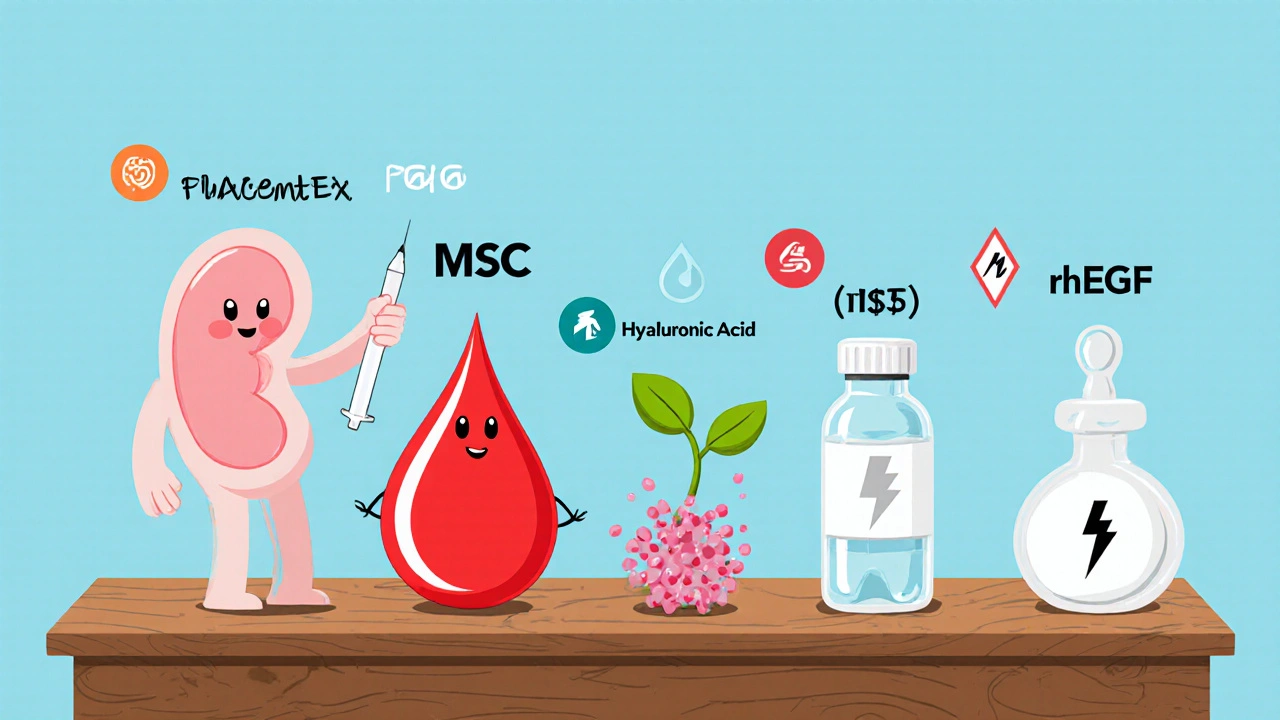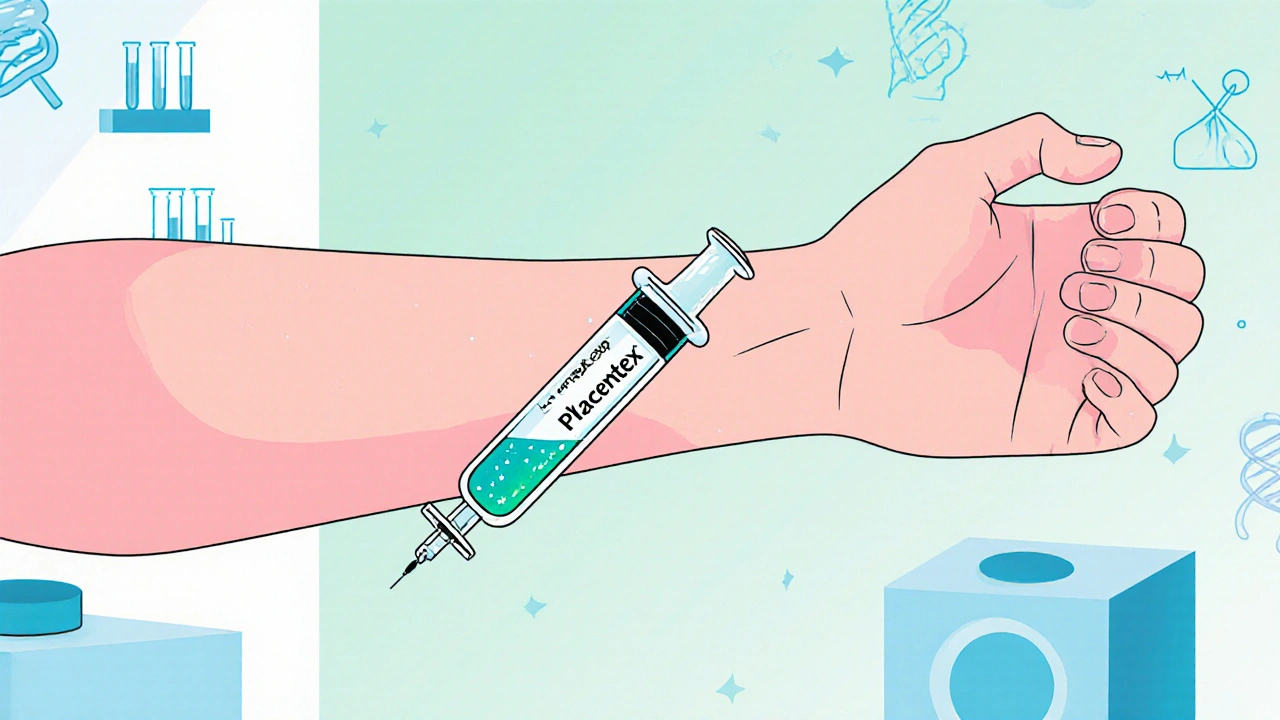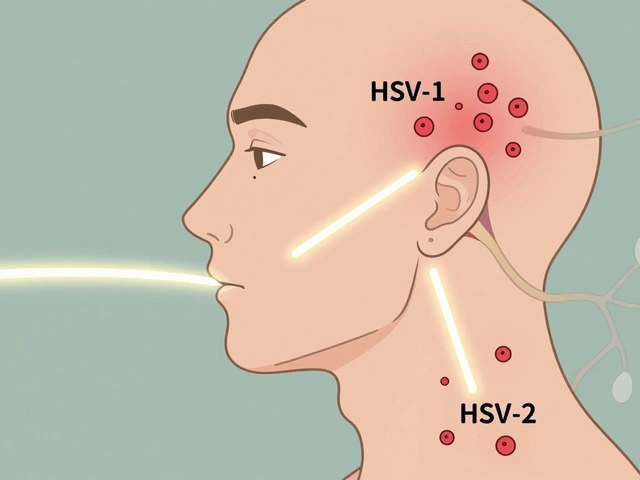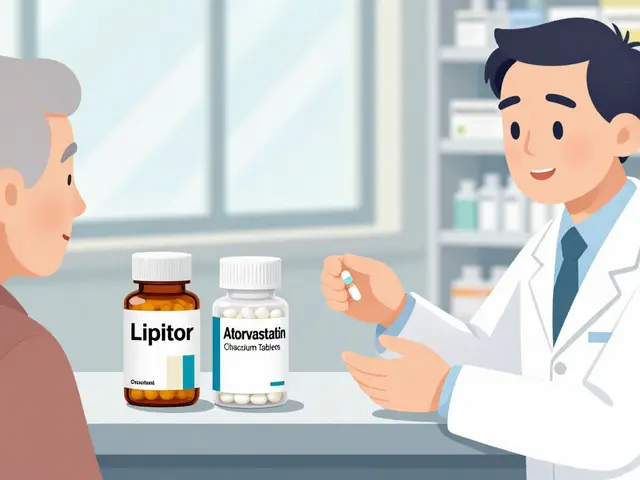Placentrex vs Alternatives Decision Tool
This interactive tool helps you compare Placentrex against other regenerative therapies based on your specific needs and priorities.
Answer these questions to find which treatment best matches your situation.
If you’ve ever Googled skin‑rejuvenation or wound‑healing options, you’ve probably stumbled on Placentrex. It’s marketed as a miracle injectable that harnesses the power of the human placenta, but how does it really stack up against other regenerative therapies? This guide walks you through the science, the cost, and the safety profile so you can decide whether Placentrex-or one of its rivals-fits your needs.
What is Placentrex?
When it comes to regenerative skin therapies, Placentrex is a sterile injectable solution derived from human placental extract that contains nitrogen‑rich compounds, growth factors, and cytokines. The product is manufactured under strict GMP conditions and is sold in pre‑filled ampoules for sub‑dermal or intramuscular use. Because the placenta is a natural reservoir of bioactive molecules, the claim is that Placentrex can accelerate tissue repair, reduce inflammation, and improve skin elasticity.
How does the nitrogen component work?
The nitrogen in Placentrex isn’t just any nitrogen-it’s primarily in the form of nitrate and nitrite ions that act as vasodilators. In simple terms, they widen blood vessels, allowing more oxygen and nutrients to reach damaged tissue. This mechanism mirrors what happens when you exercise and your body naturally produces nitric oxide. By delivering nitrogen directly, Placentrex aims to jump‑start the same micro‑circulation boost without the need for physical activity.
Key Alternatives to Consider
Regenerative medicine offers several other injectable options. Below are the most widely used alternatives, each with its own set of advantages and drawbacks.
- Platelet‑Rich Plasma (PRP) is an autologous concentration of platelets harvested from the patient’s own blood, rich in growth factors like PDGF and TGF‑β. PRP is popular for skin rejuvenation, hair restoration, and joint injuries.
- Mesenchymal Stem Cells (MSC) are multipotent cells harvested from bone marrow or adipose tissue that can differentiate into cartilage, bone, or fat cells. MSC therapy is often marketed for deep wound healing and osteoarthritis.
- Hyaluronic Acid (HA) is a naturally occurring polysaccharide used as a dermal filler to restore volume and improve skin hydration. HA injections are a mainstay in cosmetic dermatology.
- Recombinant Human Epidermal Growth Factor (rhEGF) is a synthetically produced protein that stimulates cell proliferation and wound closure. It’s sold in topical serums and injectable forms for scar reduction.
Side‑Effect Profile Across Treatments
Every injectable carries some risk. Here’s a quick snapshot:
- Placentrex: mild bruising, transient redness, rare allergic reactions to placental proteins.
- PRP: pain at the draw site, occasional swelling, infection risk if aseptic technique fails.
- MSC: immune‑mediated reactions are uncommon but possible, especially with allogeneic cells.
- HA: over‑filling, nodules, and rarely vascular occlusion.
- rhEGF: skin irritation, itching, and in high doses, hyper‑pigmentation.

Regulatory Landscape
Regulation matters because it influences product quality and insurance coverage. In the United States, FDA classifies most injectable regenerative products as either drugs, biologics, or medical devices, each with distinct approval pathways. Placentrex is marketed as a “cosmetic medical device” in several countries, but it does not have full FDA approval for therapeutic claims. PRP, being autologous, skirts many regulatory hurdles but still requires a licensed practitioner. MSC products often sit in a gray zone-some are approved for specific orthopedic indications, while others are only available through clinical trials. HA fillers are fully FDA‑cleared for aesthetic use, and rhEGF creams are generally regarded as cosmetics, not drugs.
Cost Comparison
Cost is a decisive factor for most patients. Below is a rough price range (USD) for a single treatment session:
| Product | Efficacy (clinical evidence) | Safety | Average Cost per Session | FDA Status |
|---|---|---|---|---|
| Placentrex | Limited peer‑reviewed data; small case series suggest modest improvement | Generally mild; rare allergic events | $150‑$250 | Not fully approved for therapeutic claims |
| Platelet‑Rich Plasma | Strong evidence for skin texture and hair regrowth | Low; bruising and soreness common | $300‑$600 | Regulated as a minimal‑manipulation autologous product |
| Mesenchymal Stem Cells | Emerging; mixed results in orthopedic trials | Potential immune reactions, especially with allogeneic cells | $800‑$2,500 | Investigational or limited‑indication approvals |
| Hyaluronic Acid | Well‑documented for volume restoration | Very low; occasional nodules | $400‑$800 | FDA‑cleared for aesthetic use |
| rhEGF | Topical studies show faster wound closure; injectable data scarce | Skin irritation possible | $100‑$200 (topical) / $250‑$350 (injectable) | Regarded as a cosmetic ingredient |
Decision‑Making Checklist
Use this quick list to see which option aligns with your goals:
- Desired outcome: Are you after cosmetic volume, faster wound healing, or long‑term joint health?
- Evidence tolerance: Comfortable with limited studies (Placentrex) or prefer therapies with larger RCTs (PRP, HA)?
- Budget constraints: Lower‑cost entry point (human placental extract is relatively cheap) vs high‑investment options like MSC.
- Regulatory comfort: Do you need FDA‑cleared products for insurance reimbursement?
- Allergy risk: Autologous products (PRP) minimize immune triggers, while placental‑derived proteins could provoke reactions.

Practical Considerations for Patients
Getting a treatment isn’t just about the injection. Think about the clinic’s experience, the required follow‑up, and post‑procedure care.
- Clinic expertise: Choose providers with documented training in regenerative injections.
- Number of sessions: Placentrex typically requires 3‑5 sessions spaced 2‑3 weeks apart; PRP may need 4‑6 sessions for optimal hair results.
- After‑care: Most injections advise avoiding NSAIDs for 48 hours to not blunt the inflammatory cascade that drives healing.
- Insurance coverage: HA fillers are often covered under cosmetic plans, while Placentrex and MSC are usually out‑of‑pocket.
Bottom Line: Is Placentrex Right for You?
Placentrex sits in a niche between traditional cosmetics and high‑tech biologics. If you’re looking for a relatively affordable, minimally invasive option and are comfortable with modest clinical evidence, it can be a sensible choice-especially for mild skin laxity or superficial wound care. However, if you need robust data, FDA clearance, or are targeting deeper joint issues, PRP, MSC, or HA may give you clearer outcomes and insurance compatibility.
Frequently Asked Questions
What exactly is in Placentrex?
Placentrex contains a blend of human placental extract, nitrogen‑rich nitrate/nitrite ions, amino acids, and a spectrum of growth‑factor proteins that together support tissue regeneration.
How does the efficacy of Placentrex compare to PRP?
Clinical case series suggest Placentrex can improve skin texture, but PRP consistently shows stronger evidence for collagen synthesis and hair regrowth in randomized trials. PRP also benefits from being autologous, reducing immunogenic risk.
Is Placentrex safe for people with allergies?
Allergic reactions are rare but possible because Placentrex contains foreign proteins. A skin‑test patch is advisable for anyone with a history of severe allergies.
How many treatment sessions are needed?
Most protocols recommend 3 to 5 injections spaced about two weeks apart, followed by a maintenance session every 6‑12 months if results wane.
Can I combine Placentrex with other therapies?
Yes, many clinics stack Placentrex with microneedling or laser resurfacing to boost penetration. However, avoid simultaneous high‑dose steroid injections, as they may blunt the regenerative response.






October 18, 2025 AT 16:20
I think Placentrex is a decent entry‑level option if you’re after a gentle boost without breaking the bank.